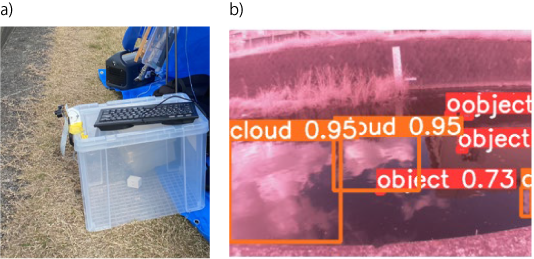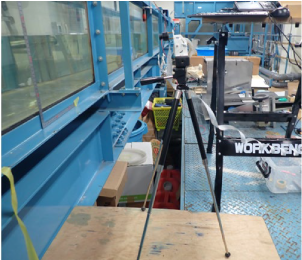
Basic research on the development of measurement technology for water level and floating litter in urban rivers for disaster prevention and environment
Ishizuka Masahide, Yamamoto Takahiro, Tamaki Tetsuya
1. Introduction
The purpose of this study is to develop a new monitoring and data measurement system in rivers by examining the visual discrimination of loating objects and the non-contact water level measurement methods using small measurement devices such as small cameras.
2. Method
A dual-use infrared/visible camera was connected to a Raspberry Pi (3B+) and set on the left bank of the Gobo River, a second-class river flowing through the eastern part of downtown Takamatsu city (Figure 1a). The camera captured images of floating objects on the surface of the water and was able to detect floating objects by machine learning (Figure 1b).
A small camera connected to the Raspberry Pi (3B+) was also installed next to the waterway in the hydraulic laboratory to capture changes in the water level (Figure 2). The captured images were used to study how to measure the position of the water surface based on differences in luminance values.

Figure 1 Observation at downstream in Gobo River
( a) Setting of a small camera, b) Object visual discrimination by machine learning)

Figure 2 Water level measurement using a small
3. Results
The results showed that 1) plastic floating objects can be detected by camera images with machine learning, and 2) the water level can be measured by a camera.
Institute of Education, Research and Regional Cooperation for Crisis Management Shikoku
Copyright(C) 2022 Kagawa University All Rights Reserved.